The Vince Meades Sheet Music Collection: S. D. S. U.

Vince Meades
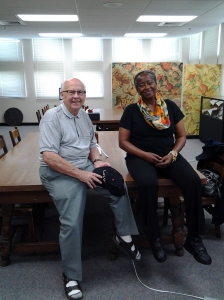
Vince Meades and Delores Fisher in SDSU Special Collections
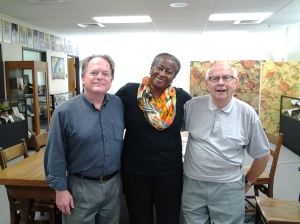
Robert Ray (SDSU Special Collections Division Head), Delores Fisher, and Vince Meades
Americana in its varied categories is an exciting field of research. Published sheet music is a fascinating aspect of Americana, documenting facets of historical events as well as cultural tendencies through music. Despite its scarcity today due socio-cultural economic complexities that include reductions in music programs in our schools as well as today’s electronic culture’s tendency to download an Mp3 for listening rather than actually reproducing the music by playing an instrument, sheet music is also downloadable from website publishing houses. One needs to use caution, however, because some arrangements once downloaded, prove to be not necessarily compatible with one’s level of musical proficency. It was so much simpler to go into a music store and browse. One could take one’s time previewing music before ordering. And most stores had catalogues for out of print music, or hard to find songs.
The study of sheet music from the mid-nineteenth to early twentieth century provides a documented cultural window into an American way of life that vibrated with sound from every household with a bugle, guitar, banjo, organ, piano, or pianola. True, sheet music must be decoded with caution; also, the back stories sometimes reveal scandal, invisibilized racial and gender conflicts. Artistic historical documents were not created in a socio-cultural( or political) vacuum.
At the turn of the twentieth century, people who loved to sing could hum their way through the neighborhood, enjoying a favorite ditty from a local concert or a traveling stage show and on occasion sharing a hum or two with a neighbor. Ask Vince Meades. He recalls growing up in England hearing many of previous century’s songs. An appreciator or “historic” sheet music, Vince Meades still remembers many of the songs and sings them with delight. He collects these gems as a gift to generations he will not meet. At eighty-one years young,he is experiencing his desire to preserve this sonic inheritance through the archiving process he oversees at San Diego State University’s Special Collections & University Archives. http://library.sdsu.edu/scua
It has been a pleasure to search through his collection alone and with Mr. Meades as guide. This page is dedicated to Vince Meades and his gracious musical heart. For those who want to experience the collection in a digitalized format, the Special Collections Department click onto this site address: http://library.sdsu.edu/digital-projects-news/visual-index-vince-meades-sheet-music-collection
The head Special Collections Librarian is
Ray, Robert
Special Collections Division Head
Location: Library Addition 4410G
Phone: (619) 594-4303
email: rray@rohan.sdsu.edu
Delores Fisher(musewoman)
PERFORMING SONGS FROM THE VINCE MEADES COLLECTION
It is interesting to consider African American popular music piano performance practices from the late eighteen hundreds to the mid 1930s. Although they provide a graphic road map, the notes on printed sheet music pages do not necessarily reflect ways in which music was played by contemporary pianists in minstrel shows, vaudeville, medicine tent shows, theater productions, home parlors. I watch extant films from the early twentieth century,(early television variety shows of Ragtime performances can provide glimpses of retentions and changed aesthetics), repeatedly listen to and watch uploaded YOUTUBE media formats, and listen to reclaimed/digitally preserved audio recordings. Fascinating!!!
I continue to play many of these songs in assemblies and at events as a way to reintroduce a fragrance of our cultural sonic memory into public consciousness, a way to remember composers’ works invisibilized from American music history. One wonders how future performers will interpret our present sonic documents in the next fifty years. What will we sound like to our future generations? How will they remember and perform today’s popular music?
Sheldon Brook’s Darktown Strutter’s Ball (On vintage Piano)
This limited page reflects several years of research that forms a basis for guest lectures, performances, and articles and an upcoming book. Note: Discrepancies in format are due to my constant editing of this page’s select contents)
I. Social Cultural Problematics of This Sheet Music Study
Vince Meades and I realize the sensitive issues involved in preserving and presenting many of these historic sheet music pieces. Some of the front page artwork and song titles of African American sheet music from the late 1800s and early 1900s are extremely offensive. Blatant racialized titles use the “N” word, slang references to Blacks popular at the time, or a pseudo dialect based on minstrel exaggerations. These racialized front pages provide an insight into late 1800s and early to mid-1900s American bigotry embedded in language conventions which carried over into popular culture.
Brush by Nigger Brush By–Introduced(Sung) by Vernona Jarbeau
Reproduced by permission of San Diego State University, Library and Information Access, Special Collections and University Archives: contact for copyright info.(Do Not Duplicate)
Year 1891
Lyrics by: Fred M. Statia
Music by:Max Hoffman
Publisher: National Music Company-Chicago and New York
Quite a few sheet music front page images with racialized titles portray Blacks using caricature, exaggerated, grotesque features and stereotypical plantation clothing.
If The Man In the Moon Were A Coon-Sung by Will J. Dickey
Reproduced by permission of San Diego State University, Library and Information Access,
Special Collections and University Archives: contact for copyright info.(Do Not Duplicate)
Year 1905
Lyrics and Music by: Fred Fisher
Published for Violin solo, Cello solo, Trombone solo,
Orchestra Accompaniment, Cornet solo
Publisher: Will Rossiter, Chicago
Note: Research this summer will be to generate a foundational quantitative break down based on identification, classification, number of genres and sub-genres from the collection.
On the opposite side of the front page titles and images spectrum, various titles are non-referential, with a Victorian flavor and front page images which feature African Americans with “majority culture” almost non-Black features and stylized overly formal clothing. Few front pages offer Blacks in real life portrayals.
The scant numbers of sheet music front page images that show Blacks in a variety of real life imagery are a refreshing wind in an odorous miasma. Although perhaps not known to today’s general public, it was for obvious reasons at that time that the African American corporeal presence ( also that of immigrants and ethnic minorities) was a disputed terrain in the psyche of many mainstream “Nationalist” Americans.
As for African Americans, the middle class was self-conscious about their blackness, advocating within the community a need for positive affirmation of their Americanism.The uplift paradigm embraced leaving in the not so distant past, slavery, non-citizenry, and a stereotypical culturally distorted plantation persona. Blacks withing the community advocated erasure of all stigmatized appearance and behavior as “in the race’s best interest of the Negro” for national assimilation.1 Economic success and cultural development became a banner uniting Blacks who lived under the constant demoralization of Jim Crow Laws.
Of course, along with economic and cultural success, challenging aspects of racial violence as a reality still pervaded everyday lives of Black musicians, even up into the 194os.
Facets of complex racial intersections in pre and early to mid-twentieth century African American musical history is reflected in the front page artwork one finds in the Vince Meades Sheet Music Collection from 1850 to 1930. Consider the music and life of Ernest Hogan.
II. Minstrelsy
III. A SELECT SET OF SHEET MUSIC FROM THE COLLECTION
COON SONGS
Ernest Hogan

Ernest Hogan Songwriter and Minstrel Performer
Hogan’s career star began to rise with the writing of Coon song, “All Coons Look Alike to Me.” According to David A. Jense and Gene Jones, “Hogan’s fame would be eclipsed by that of Bert Williams, and the memory of him would be tainted by the notoriety of his biggest song.”2 His song innocently poked fun at Black male/female relationships. The controversy generated by his seemingly harmless tune with its unfortunate title damaged and continues to damage they way music historians and the public view his musical contributions to American popular music. And it became a catch phrase that fired up racial tensions up into the 1990s. (Don’t Remember: All Blacks look alike to me?, many Blacks still cringe when that expression is jokingly uttered).
Since many Coon songs were also published overseas . . . the impact is an area of twenty first century research little explored. Ernest Hogan was a African American minstrel showman whose performance style and fame was often overshadowed by this, his signature song. Yet, the actual published work is a collaborative effort.
“Isidore Witmark, the song’s publisher, looked over Hogan’s initial song. Then he, “ . . .doctored the music a bit and tinkered with the lyric of the second verse, then gave it to his arranger, Max Hoffman. Hoffman devised an extra syncopated chorus ‘with Negro Rag Accompaniment’ the first use of the term “rag” on a song sheet. Hogan’s songs was given a cover drawing of several grotesque coons and was sent to market. (32)
The front page Of “All Coons Look Alike to Me” 3 in the Vince Meades collection is one of the most popular during that era. The title uses a slang term for African American from minstrelsy years. Its grotesque portrayal of Blacks is the main one that people remember. It is different from the front page version I saw at The La Jolla Athenaeum Music and Arts Library when I worked as a Black Music History Outreach Research Assistance to San Diego City Schools several years ago under the guidance of Judith Oishei – http://www.ljathenaeum.org/outreach.html . They too have an extensive historical sheet music collection.
Many of these sheet music front page caricature grotesques of Blacks corporeal presence were often used as visual markers to highlight those physical traits considered as proof of inferiority by those who supported racial hatred. These inflammatory titles and front page images sometimes created a difficult research posture of objectivity during my research collaboration with Mr. Meades. His mentoring and sensitivity helped me to get beyond my initial . . . shock.
Good By Lil’ Liza Jane: Hello Alsace Lorraine (WWI Theme)
Reproduced by permission of San Diego State University, Library and Information Access, Special Collections and University Archives: contact for copyright info.(Do Not Duplicate)
Lyrics by Hugh McNutt
Music Karl Johnson
Although we now read the titles and lyrics over the distance of time, out of the composer’s original context and consider them obnoxious, and can consider the melody “quaint,” the melody of “All Coons Look Alike To Me” was known to inspire inter-racial outbreaks off stage when sung, whistled or hummed by non-Blacks when African Americans were near, or walked by.
Reproduced by permission of San Diego State University, Library and Information Access, Special Collections and University Archives: contact for copyright info.(Do Not Duplicate)
Reproduced by permission of San Diego State University, Library and Information Access, Special Collections and University Archives: contact for copyright info.(Do Not Duplicate)
Song and Chorus: All Coons Look Alike To Me
“Composer” Ernest Hogan
Publisher: M. Witmark & Sons 1906
ENDNOTES
1. Talk to older Blacks alive today about the uplift movement.
2. Jasen, David A. and Gene Jones. Spreadin’ Rhythm Around: Black Popular Songwriters, 1880-1930. (New York: Schirmer Books, 1998) 32
3. Note that the Jasen and Jones quote addresses some of the origins controversy surrounding the origination of the term “Rag” in popular culture and on published sheet music. It is a point of contention in essay by Fred Hoeptner, “Crittenden’s Rag” American Music Review Vol. XL, No1 Fall 2010. Hoeptner challenges the reference to Rag’s cultural and musical origins in Lynn Abott and Doug Seroff’, “Out of Sight: The Rise of African American Popular Music, 1889-1895(University of Mississippi Press 2002),443.
Delores Fisher Musewoman
JAMES BLAND

James Bland
Of course, notational variance and other complex issues of unwritten popular African American music performance practices have been commented on for . . .a while. Popular songs were(and still are) often re-interpreted, mediated to fit the times. American music history books frequently gloss over popular African American music written immediately following the Civil War. Several well respected musicians survived from minstrelsy and became sought after to work in early vaudeville. Consider the fairly well documented songwriting and performing career of composer/musician James Bland. http://www.songwritershalloffame.org/exhibits/C187
His songs came to my attention one day when I was a child, watching an old Western on television, a saloon scene. Cowboys pushed through wooden slated double doors, dusted off their hats. Bar keeps snarled as women and men flirted over a hard glass of whiskey. In the background, a piano player was thumping out “Oh! Dem Golden Slippers!” I remembered thinking, this has got to be a song sung by Blacks, (I am not sure to this day why….perhaps the syncopation sounded somehow familiar). I filed the tune in memory until it resurfaced years later while reading Eileen Southern’s African American Music: A History1. Jame’s Bland’s serious, handsome face in a picture taken when he was a young man confirmed my childhood thoughts. It was a pleasure to find several Bland tunes archived in the Vince Meades collection including one of his better known popular songs published by Carl Ditson in 1906 “Carry Me Back to Old Virginia.”

Reproduced by permission of San Diego State University, Library and Information Access, Special Collections and University Archives: contact for copyright info.(Do Not Duplicate)
Song and Chorus: James Bland
Publisher(s): Boston Oliver Ditson Company, 1906
As Sung By : Alma Glick
The song is in the key of Ab major and has a highly syncopated four measure introduction. In 1940 Bland’s tune became the state song of Virginia until according to Lauren Hall, “Legislation was passed in 1997 that retired “Carry Me Back to Old Virginny” as the state song, but it still remains the state song emeritus.”2
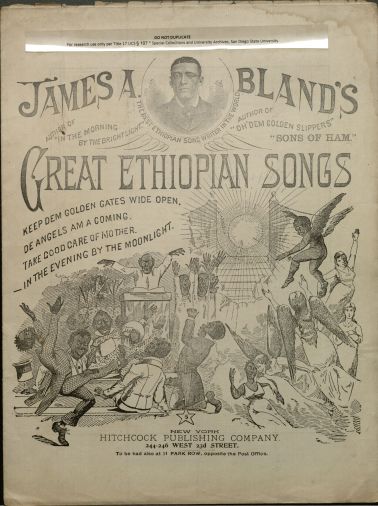
ENDNOTES
1. Eileen Southern, The music of Black Americans: a history, 2nd ed. (New York: Norton, 1983).
2. Lauren Hall. Biography. http://pabook.libraries.psu.edu/palitmap/bios/Bland__James.html 2006. According to Hall, Bland was a prolific African American popular music composer who wrote over six hundred songs.
Delores Fisher(musewoman)
Darktown Struttin’
My mother was a singer and pianist who read music. She took music lessons in the south for several years when she was young. My father,also from the south, was a singer who had performed with a male quartet in as a young man.He read music a little and sang solos in church quite frequently. I wrote a short biography about my musical parents on the now defunct Myrtle Hart Society website embedded in a short essay about Jean Toomer’s novel Cane “Music and Everyday life: An Essence of Generational Sharing.”
Like so many other African American parents of that era, they sacrificed to provide educational and cultural experiences for my siblings and me. Our first music teachers and mentors, my parents later provided private music lessons for all of us outside of the public school system.
My mother had all sorts of sheet music in the piano bench, but my most vivid memories of her playing and singing center around sacred music-hymns and gospel songs. When I was a child, it was an adventurer to dig around stacks of music neatly placed side by side in three rows. Momma always knew when I had gone treasure hunting for an old song not only because the rows would not seem to align right because I left three slanty piles when the bench closed, but because I would sit down immediately and begin to try to sight read the songs. I would’nt wait until I had finished practicing my scales ort he week’s lesson despite the fact that my folks disapproved of my playing pop music. One afternoon, I pulled a song out titled “Darktown Strutter’s Ball.” Its front page cover was a solid deep chocolate with big white title letters.
Even before I had opened its pages, the title resonated with me. It hinted somehow that it was about African Americans, I knew some of the title’s coded words (Darktown Strutters)were a type of slang, although my parents did not allow us to use teenage slang or idiomatic phrases. We were taught that standard English was the ticket to acceptance; one never had an adequate excuse for using slang. So, like most minority teens at the time, I code switched and hoped that my folks were not close enough to listen in when friends and I talked. In the same vain, playing pop music using, playing blues–well that was totally unacceptable too.
However, my siblings and I would go over to my aunts house, use slang, talk about the new pop music from people like Chuck Berry, Peaches and Herb, the Temptations, Etta James and Sam Cook. We’d play vinyl R&B 45s and dance the Watusi, the locomotion, the Strut. In my mind, without proof of the composer’s identity, this had to be an early version of the new Black music and dances like Soul Strut. During those days, a sense of racial pride in our pop music produced by Stax and Motown had began to increase record sales in our communities.
My piano lessons emphasized traditional Classical instrumental music and light Classics (arts songs, opera excerpts). It was like talking to my parents. When I sat down and started sight reading the music in Shelton Brook’s “Darktown Strutter’s Ball”, it was like talking to my friends. It had sonic similarities, but with a different rhythmic syntax than Classical music. It’s music had a swing that caused me to seek out more songs from the twenties and earlier.
My mom, surprisingly, let me continue playing these songs. Years later, I realized that she had played them herself as a young woman and had kept them, along with her Gospel Pearls Hymnal as a musical legacy for me. Sometimes when no one else was home except me and her, momma quietly sang along in the kitchen as she prepared lunch or dinner, just loud enough for me to hear; at other times, she would hum with a sweetness the made me smile despite the awkwardness of my rendition. It was her music, music from her youth. Intergenerational sharing of a sonic tapestry from early twentieth century musical Americana.
David A. Jasen and Gene Jones in Spreadin’ Rhythm Around: Black Popular Songwriters 1880-1930, offer unique perspectives about popular music culture, publishing, Tin Pan Alley, Broadway, and Black musicians. They provide a brief biographical overview of Shelton Brooks’ life. A successful Black songwriter, Brooks was born in Canada, but later moved to Cleveland Ohio where he wrote “Some of These Days” which Sophie Tucker incorporated into her act around 1910 and continued singing until the end of her career in 1966.1 Shelton Brooks later wrote a dance hit song titled “Walkin’ the Dog” in 1916. 2 (Hmm let’s see: “Walkin’ the Dog” Rufus Thomas, “Atomic Dog” George Clinton, “Doggy Style” Snoop Dog, “Who Let the Dogs Out?” —-possibly an area of future study….).
WALKIN’ THE DOG
Reproduced by permission of San Diego State University, Library and Information Access, Special Collections and University Archives: contact for copyright info.(Do Not Duplicate
Year 1912
Words and Music Shelton Brooks
Publisher Will Rossiter
Brook’s “Darktown Strutter’s Ball” begins with the lyrics “I’ll be down to get you in a taxi Honey, You better be ready about half past eight.” The story is about going outto dance, to party and the song’s music has a swing, a swag that could be updated into a contemporary Hip Hop remake.
Like some of the other songs Vince Meades and I would smile and hum together, “Darktown Strutter’s Ball” holds a special place in my memories.
Shelton Brooks Performing “Hole In the Wall”
ENDNOTES
1. Jasen, David A. and Gene Jones. “Shelton Brooks” Spreadin’ Rhythm Around: Black Popular Songwriters, 1880-1930. (New York: Schirmer Books, 1998).145-151
2. Ibid, 148.It contributed to the early twentieth century dance craze-mania similar to what we continue to nurture today (Think of the a few of our dance related TV shows and movies that have come out in recent years of the 21st century–“iCarly,” “So you think you Can Dance,” “Dancing With the Stars,” “America’s Got Talent,” “BunHeads,” Step Up”.
Delores Fisher Musewoman

Young Sissle and Blake Duo
In the 1970s, we didn’t have the luxury of channel surfing with TV remotes. To change a channel, we had to get up or reach over to flip the dial. Either way, to most viewers minds, it was an inconvenience. That very factor kept me watching intently one afternoon as an elegant, thin, bald headed man stepped to the piano on a variety show and played like I’d heard older church musicians, with a left hand roll/wobble and syncopation that sounded more blues than 197os Gospel. Whenever he appeared on various TV shows from that time on, as a young pianist, I’d sit enraptured by his musicianship. Eubie Blake could still “rag” a song to toe tapping thrills and on occasion, he would play a song or two from his first hit musical with Noble Sissle. Here’s one of my favorite YOUTUBE shorts on Eubie Blake
One afternoon, Vince Meades took me to a file cabinet with a very unique historic collection. We examined every song excitedly, but very carefully; we both have a love for musical theater! I have composed music for and also accompanied theaterical productions in San Diego and continue to do so. Each song brought smiles to us both. When I came to the familiar image of an African American man with hat and cane, I froze. I had only seen that image on digital websites. That day, I was holding one of the original groundbreaking Shuffle Along songs by Sissle and Blake in my hand. It is a love ballad without plantation dialect or typical “coonsong” lyrics: “Love Will Find A Way”.
LOVE WILL FIND A WAY
Reproduced by permission of San Diego State University, Library and Information Access, Special Collections and University Archives: contact for copyright info.(Do Not Duplicate)
Year: 1921
Lyricist: Noble Sissle
Music/Composer: Eubie Blake
Book by Flournoy Miller and Aubrey Lyle
Publisher(s): N.Y. M. Witmark and Sons
Vince Meades encouraged me to keep looking because he had collected several other songs from the show that many archives don’t have. I shared how Eubie Blake’s and Sissle Noble’s careers seemed to slide into obscurity and how at life’s end Eubie Blake’s talent, musical contributions, and life’s work won renewed respect and honor for the songwriting team’s place in American popular music history.
I thought about the controversy over Blakes’ birth year and his contributions to the Shuffle Along, despite it’s edgy “New Negro” content and fairly sophisticated production package, it did have remnants of minstrelsy with Miller and Lyles. Flournoy Miller actually wrote some of the dialogue for the 1930s radio show “Amos and Andy” radio show.1.
However, the show had so many important African American musical personalities that I chose to simply present the songs in Vince Meade’s collection and write more about the show’s importance in a separate essay in my upcoming book. (For example, William Grant Still the Dean of African American Composers was the show’s oboist ). Based on books about Blake’s and Sissle’s lives1, whatever the verdict, their songs broke with Black music composition and lyric stereotypes. They helped to change the sonic tapestry of twentieth century American musical theater.
Reproduced by permission of San Diego State University, Library and Information Access, Special Collections and University Archives: contact for copyright info.(Do Not Duplicate)
Year:1921
Lyricist: Noble Sissle
Music/Composer: Eubie Blake
Book by Flournoy Miller and Aubrey Lyle
Publisher(s): N.Y. M. Witmark and Sons
Oriental Blues: this version in d minor, 4/4 opens with a simple repeating single note bass pattern of i-v -i-v for twenty four measures. It’s not a traditional Blues number.
Reproduced by permission of San Diego State University, Library and Information Access, Special Collections and University Archives: contact for copyright info.(Do Not Duplicate)
Year:1921
Lyricist: Noble Sissle
Music/Composer: Eubie Blake
Book by Flournoy Miller and Aubrey Lyle
Publisher(s): N.Y. M. Witmark and Sons
And of course the tune with which most of us are familiar even today, “I’m Just Wild About Harry.” The back page of this Witmark version advertises excerpts from four Shuffle Along songs. It was one successful sales marketing tool used by early twentieth century publishers. “I’m Just Wild About Harry” was not only a hit song, it became Harry S. Truman’s campaign theme song at a time when political candidates would create immediate recognition through use of a familiar popular song.
I’m Just Wild About Harry
Reproduced by permission of San Diego State University, Library and Information Access, Special Collections and University Archives: contact for copyright info.(Do Not Duplicate)
Year: 1921
Lyricist: Noble Sissle
Music/Composer: Eubie Blake
Book by Flournoy Miller and Aubrey Lyle
Publisher(s): N.Y. M. Witmark and Sons
ENDNOTES
1. Kimball, Robert and William Bolcom, Reminiscing with Sissle and Blake (New York: Viking Press, 1973) pg.110.
2. Two interesting sources of information on Eubie Blake, Sissle Noble, and Shuffle along, Jasen, David A. and Gene Jones, “If You’ve Never Been Vamped By A Brown Skin: Black Theater Composers of the 1920s” Spreadin’ Rhythm Around: Black Popular Songwriters, 1880-1930 (New York: Schirmer Books, 1998). pp335-360 and Kimball, Robert and William Bolcom, Reminiscing with Sissle and Blake (New York: Viking Press, 1973) , provide fascinating, informative socio-cultural and historical insights into their lives as early twentieth century musical innovators.
3. Kimball, Robert and William Bolcom, Reminiscing with Sissle and Blake (New York: Viking Press, 1973) Harry S. Truman Souvenir photo 229.
Delores Fisher(Musewoman)
LATE 1800s and EARLY TWENTIETH CENTURY SHEET MUSIC
Some of the collections most interesting songs are from the pre and early 1900s before the Coon Song became major part of the vaudeville and popular music scene.
In Search Of Tom Logan Minstrel Composer (A brief informal research summary)
Minstrelsy is studied today for a variety of reasons and from diverse perspectives. An interdisciplinary approach seems to provide several comparative lenses to assist in understanding subtle complexities of this fairly engrossing American musical genre that became one of modernity’s “soft global cultural influences.” A few boxes into my initial research with Vince Meade’s voluminous sheet music collection and I knew I was looking at a window into a world of my grandparent’s generation. Growing familiarity with this SDSU Special Collection archive is producing surprising discoveries.
One morning while leafing through about one hundred late 1800 to 1910 song selections, almost midway through a box, I saw a Coon song with an image and name that puzzled me. Tom Logan, an African American NOT in Black face.
Intriguing . . .
A composer who has almost been invisibilized from current African American minstrelsy literature, Tom Logan was a well respected and versatile African American performer 1. Excitedly, I removed the very worn, delicate sheet music from its protective sleeve. I wanted to locate a possible arranger and publication date first; no other names listed except Jones and Logan with an 1898 publication date. Then, I examined the lyrics and chord structure.
Several years earlier, I had read about a select number of well-known early African American performer/popular music composers, for example, Ernest Hogan, Will Marion Cook, Bert Williams, Gussie Davis, James Bland and several others in the ground breaking research of musicologist Eileen Southern 2. My curiosity started in a graduate class while reading Southern’s text suggested by one of my mentors, renown Ethnomusicologist and Jazz specialist Dr. Eddie Meadows. http://music.sdsu.edu/newsite/index.php/faculty_bios/meadows
Hogan, Cook, Williams, Davis, Bland, etc., continue to appear in several respected twenty-first century texts.
At the time of my research last year, I had read several chapters of Out of Sight 3. and remembered seeing the name Tom Logan; however, he did not become real to me until I held the actual sheet music in my hands. The lyricist that Logan collaborated with for “Breakaway Mr. coon” was Irving Jones. His is another forgotten, yet well known name of the minstrel era. A more dynamic African American sense of Minstrelsy is unfolding.
Pursuant Internet searches yielded references to the Abbott and Seroff texts. Yet, I did not find additional references that were more than cursory until I began reading another of the Abbott and Doug Seroff’s books Ragged but Right4. that was very informative. It has multiple references to Tom Logan and Irving Jones. Today, (Spring semester 2012) I continue teaching about minstrelsy in various aspects during the Africana Studies 385 music history class for the Dept. of Africana Studies at SDSU. http://www-rohan.sdsu.edu/~afras/faculty.htm
Although not as comprehensive as Eileen Southern’s seminal work, Burnim’s text, African American Music: An Introduction5 applies current Africana and cultural studies perspectives to interrogate the genre. An interesting note: The sheet music apparently had what one could consider limited global publication/distribution.
Year 1898
Lyricist: Irving Jones
Music/Composer: Tom Logan
Publisher(s): N.Y. Arthur W. Tams, Toronto, Ont. Whaley Royce & Co., London Eng. Chas Sheard & Co.
Reproduced by permission of San Diego State University, Library and Information Access, Special Collections and University Archives: contact for copyright info.(Do Not Duplicate)
ENDNOTES
1. Lynn Abbott and Doug Seroff, Out of Sight: The Rise of African American Popular Music, 1889-1895 (Jackson : University Press of Mississippi, 2002). This newspaper archive research text that has been causing a stir in American musicology.
2. Eileen Southern, The music of Black Americans : a history, 2nd ed. (New York: Norton, 1983).
3. Lynn Abbott and Doug Seroff, Out of Sight: The Rise of African American Popular Music, 1889-1895 (Jackson : University Press of Mississippi, 2002). pg.50
4. Lynn Abbott and Doug Seroff, Ragged But Right, 1st ed. (Jackson: University Press of Mississippi, 2007) For information on Tom Logan see pp.49-50,52,93,102,252. For information on Irving Jones see pp30-35,40, 44, 235.
5. Mellonee V. Burnim and Portia K. Maultsby eds., African American Music: An Introduction (New York: Routledge, 2006.), 185-192.
Delores Fisher(Musewoman)
Honky-Dorey
Mini Biography
ABE HOLZMANN1.
Holzmann was educated at the New York Conservatory. He was a staff arranger, composer, and manager for the orchestra department of music-publishing firms, and advertising manager for the ‘International Musician’. Joining ASCAP in 1923, his song and instrumental compositions include “Smoky Mokes Cake Walk”, “The Whip”, “Loveland Waltzes”, “First Love Waltz”, “Symphia Waltz”, “Blaze Away”, “The Spirit of Independence”, and “Old Faithful”.
1. IMDb Mini Biography By: Hup234!
Web reference: http://www.imdb.com/name/nm1871520/bio
Year: 1900
Composer: Abe Holzmann
Publisher: Feist and Frankenthaler
Genre: Two Step, Instrumental (piano)
Delores Fisher (Musewoman)
Reproduced by permission of San Diego State University, Library and Information Access, Special Collections and University Archives: contact for copyright info.)
Delores Fisher (Musewoman)

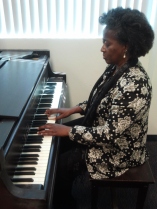
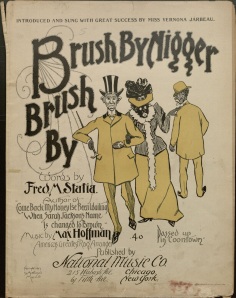
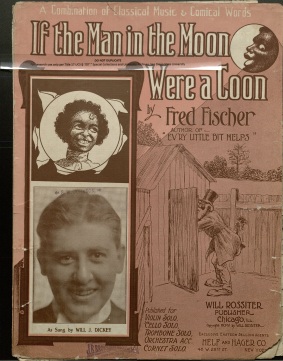
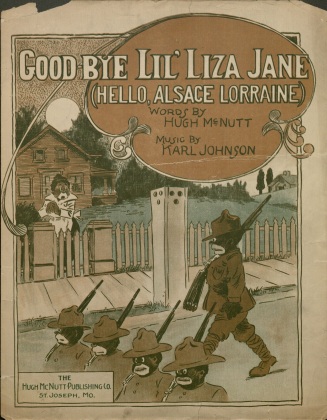




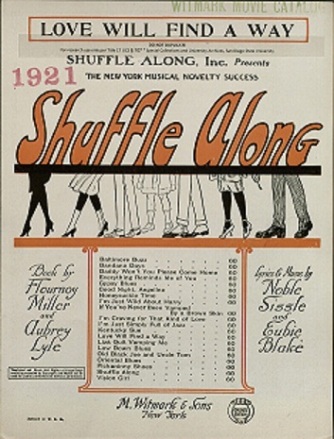
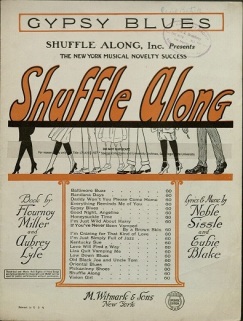


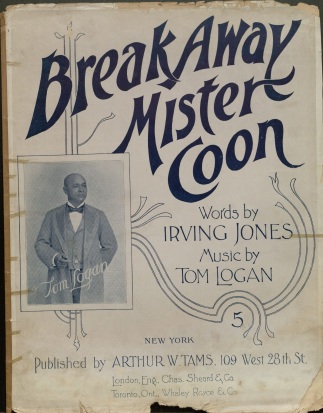


I am so happy to read this. This is the kind of info that needs to be given and not the random misinformation that is at the other blogs. Appreciate your sharing this beneficial content.
LikeLike
This year, I hope to add more content. I have been doing research recently and have not posted much. September will have more posts.
Delores Fisher/Musewoman
LikeLike
you post is very well elaborated, it interested me a lot, thanks for it. lista de email lista de email lista de email lista de email lista de email
LikeLike
You know, Mr. Vince Meades is such a gracious man. He welcomed me into this research collection as did the San Diego State University Special Collections Department.
It takes a lot of patience and linking historic names with events and cultural ideas—however, it is worth it.
(Especially if I can get others interested too!)
Delores Fisher/Musewoman
LikeLike
Carlos,
I hope to add more song perspectives from recent research and collaboration with Vince on this page in 2013. Also, I will be writing book reviews of recommend texts that have information that can be used to supplement the Vince Meades page—so be sure to also check the Books page every month.
Delores Fisher
Musewoman
LikeLike
Things i have always told men and women is that when you are evaluating a good on-line electronics store, there are a few components that you have to take into account. First and foremost, you would like to make sure to discover a reputable as well as reliable shop that has received great opinions and scores from other customers and industry professionals. This will ensure that you are dealing with a well-known store that can offer good services and support to their patrons. Many thanks for sharing your notions on this web site.
LikeLike
Clair,
Thank you for the support and positive comments.
This is blog site is truly as work in progress and I hope to continue refining the process with interdisciplinary scholarly inquiry.
Delores Fisher
Musewoman
LikeLike
i came to your blog searching through google, and i’m glad i found it because it’s helping me a lot. lista de email lista de email lista de email lista de email lista de email
LikeLike
thanks for the great post. it reminds me that i have to bring more structure into my blogging. your blog is very interesting. please let me know how to go for your rss blog. lista de emails lista de emails lista de emails lista de emails lista de emails
LikeLike
I just want to say I am beginner to weblog and definitely savored this web blog. Very likely I’m planning to bookmark your blog post . You really have wonderful articles. Thanks for revealing your blog site.
LikeLike
I am curious to find out what blog system you’re utilizing? I’m experiencing some small security problems with my latest site and I would like to find something more safeguarded. Do you have any suggestions.
LikeLike
Daniel,
Write your question to the people at Word Press. They are very supportive and will be better able to answer it.
Musewoman,
Delores Fisher
LikeLike
There’s certainly a great deal to know about this subject. I really like all the points you made.
LikeLike
Yes,
It seems the more I research, the more that is uncovered to reveal we have only a small window of knowledge through which to view our historical past.
I sometimes wonder what will be said of our times 100 or so years from now . . .
musewoman,
D. Fisher
LikeLike
glad to know about something like this. lista de email lista de email lista de email lista de email lista de email
LikeLike
i really liked your article. keep up the good work. lista de email lista de email lista de email lista de email lista de email
LikeLike
I have recently been looking into African American Television Show music with Vince. His collection is amazing. Much of it remains to be digitalized. The process started last year is only the beginning.
More posts are on the way. It’s been an interesting few weeks.
Musewoman,
D. Fisher
LikeLike
i am always learning new things with your blog this is very good. lista de emails lista de emails lista de emails lista de emails lista de emails
LikeLike
I simply want to tell you that I am newbie to blogs and actually enjoyed this web-site. More than likely I’m going to bookmark your blog post . You actually have incredible article content. Appreciate it for sharing your web page.
LikeLike
Great articles & Nice a web site….
LikeLike
I simply want to say I am just beginner to weblog and truly savored this web page. Probably I’m likely to bookmark your blog . You really have terrific articles. With thanks for revealing your website page.
LikeLike
Together with the whole thing that appears to be developing inside this particular area, all your points of view are actually relatively refreshing. Even so, I am sorry, but I can not subscribe to your whole idea, all be it exciting none the less. It looks to us that your remarks are generally not totally validated and in reality you are generally your self not really wholly certain of the assertion. In any case I did enjoy reading through it.
LikeLike
Claude,
Interesting and also refreshing comments.
Not certain as to what you mean by “It looks to us that your remarks are generally not totally validated.” Sources are limited to fit the blogger format. I have many other primary and secondary sources to support comments about American society and the complexities of race relations during the time periods discussed. The sheet music posted is from a Special Collections archive and I have handled them myself on several occasions.
Personal comments are indeed anecdotal. African American culture and life experiences are very diverse. Stereotypes abound that don’t validate daily lives or historical lives of Black people from all sectors of American society experience here in the states.People outside the culture who have limited interactions with African Americans often have difficulty in “knowing” us without having truly lived among us for more than just a few weeks or only one to two years.
Musewoman,
Delores
LikeLike
Amazing Web Site You Made Here. Very Educational Subject For A Post Keep Up The Amazing Work!
LikeLike
Really Amazing Website You Have Here. Very Informative Subject For A Post Keep Up The Great Work!
LikeLike
I do not even know how I ended up right here, but I thought this put up was great.
I don’t understand who you’re however definitely you
are going to a famous blogger for those who aren’t already. Cheers!
LikeLike
Do you mind if I quote a few of your articles as long as
I provide credit and sources back to your website?
My blog is in the exact same niche as yours
and my visitors would definitely benefit from a lot of the information you provide here.
Please let me know if this alright with you. Thank you!
LikeLike
Thank you for asking.
I briefly previewed the sunsetavevolleyball site and it looks very uplifting and informational. . . Hopefully you are referring to that site. Please fell free to quote my site. I know some do not agree with my posts, but we live in a nation with freedom to express our views and research findings. My hope is that fellow bloggers will be respectful in their disagreement and also in their supportive acknowledgement.
Musewoman,
Delores Fisher
LikeLike
Good day! This post couldn’t be written any better! Reading through this post reminds me of my old room mate! He always kept talking about this. I will forward this write-up to him. Pretty sure he will have a good read. Many thanks for sharing!
LikeLike
Howdy! Would you mind if I share your blog with my zynga
group? There’s a lot of folks that I think would really enjoy your content.
Please let me know. Cheers
LikeLike
These aare actually great ideas in concerning blogging.
You have touched some fastidious things here. Any way keep up wrinting.
LikeLike
A very interesting assertion. To say that all don’t do well . . . is quite a stretch.
Check the stats.
Musewoman
Delores Fisher
LikeLike
Hello there, I identified your web site by way of Google although seeking for a associated subject , your website came up, it seems excellent. Ia??ve bookmarked it in my google bookmarks
LikeLike
Yours can be a prime example of informative writing. I think my students could learn a great deal from your writing style and your content. I may share this article with them.
LikeLike
Keep up the support and encouragement.
I am a believer in presenting informative blogs beyond
the usual hype and “bling”. Please feel free to share the articles and create
activities for discussion. Let me know what they think. As a co-learner in this process,
I welcome your and your students’ feedback.
Musewoman,
Delores Fisher
LikeLike
Thank you for sharing your thoughts. I really appreciate your efforts and I
will be waiting for your further post thanks once again.
LikeLike
How can I best copyright protect stories and articles on my writing website? I know you can insert a copyright symbol, but can this COMPLETELY protect against somebody copying and pasting your stuff and claiming that it is theirs?.
LikeLike
Hey Energeticdad,
Re-read instructions by your chosen site managers about blog post copy write.
Also, try asking your readers to embed your weblink into their site
and to give you credit before using your ideas or text.
Most teens (and a few adults) need a reminder to avoid basic “cut and paste”
writing by giving credit to others from whom they cite or paraphrase.
Delores Fisher,
Musewoman
work.
LikeLike
great submit, very informative. I’m wondering why the opposite experts of this sector do not understand this. You should continue your writing. I’m confident, you have a great readers’ base already!
LikeLike
I am trying to find out some really good information sites for studying. I used to be searching over google and found your web page. Properly i love your skilled blog site style and design along with your posting capabilities. Carry on doing it.
LikeLike
Hey thanks,
I am working on making the site more accessible.
And thank you for subscribing to the RSS
Musewoman
LikeLike
“Silver ira,”
Always try to site the source or provide documentation.
Even if you paraphrase– use documentation: MLA, APA, Turabian . . . .
If author is not available, at the least, cite newspaper title, year, date
Most writer’s reference books (Keys for Writer’s etc.) will tell you to cite the source.
A daily newspaper is considered a periodical.
click onto this website. It should help.
https://owl.english.purdue.edu/owl/resource/560/07/
Musewoman,
Delores Fisher
LikeLike
“Tinyurl”
Always ask your teacher for assignment clarification of assignment directions.
Are any topics forbidden, or considered too broad for 2 pages?
So much is available to consider….
1.Try brain storming-clustering ideas together about nature or music, or even the weather.
2. Make a list of interesting topics–then narrow your list down to only 2 topics.
3. Look around, describe what you see, imagining it from a 7 year old child’s or an 80 year old
senior citizen’s perspective.
4. Also, do a timed “free write”! Write about whatever comes to mind in 15-20 minutes and see if an
idea thread or topic theme is beginning to emerge from your thoughts.
Try these strategies,
Good luck.
Musewoman
Delores Fisher
LikeLike